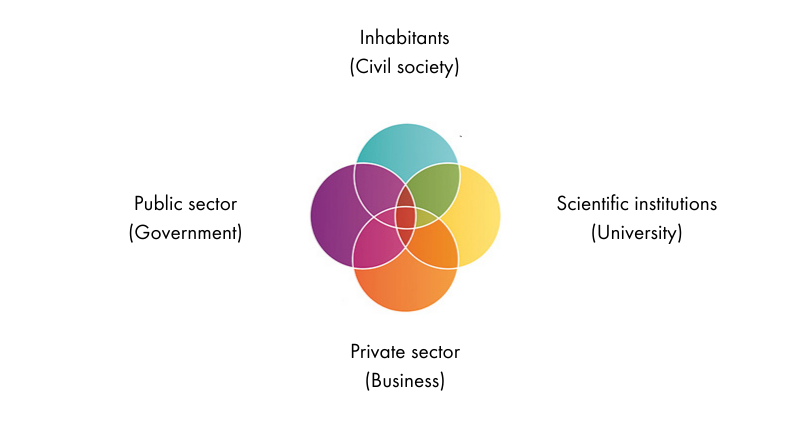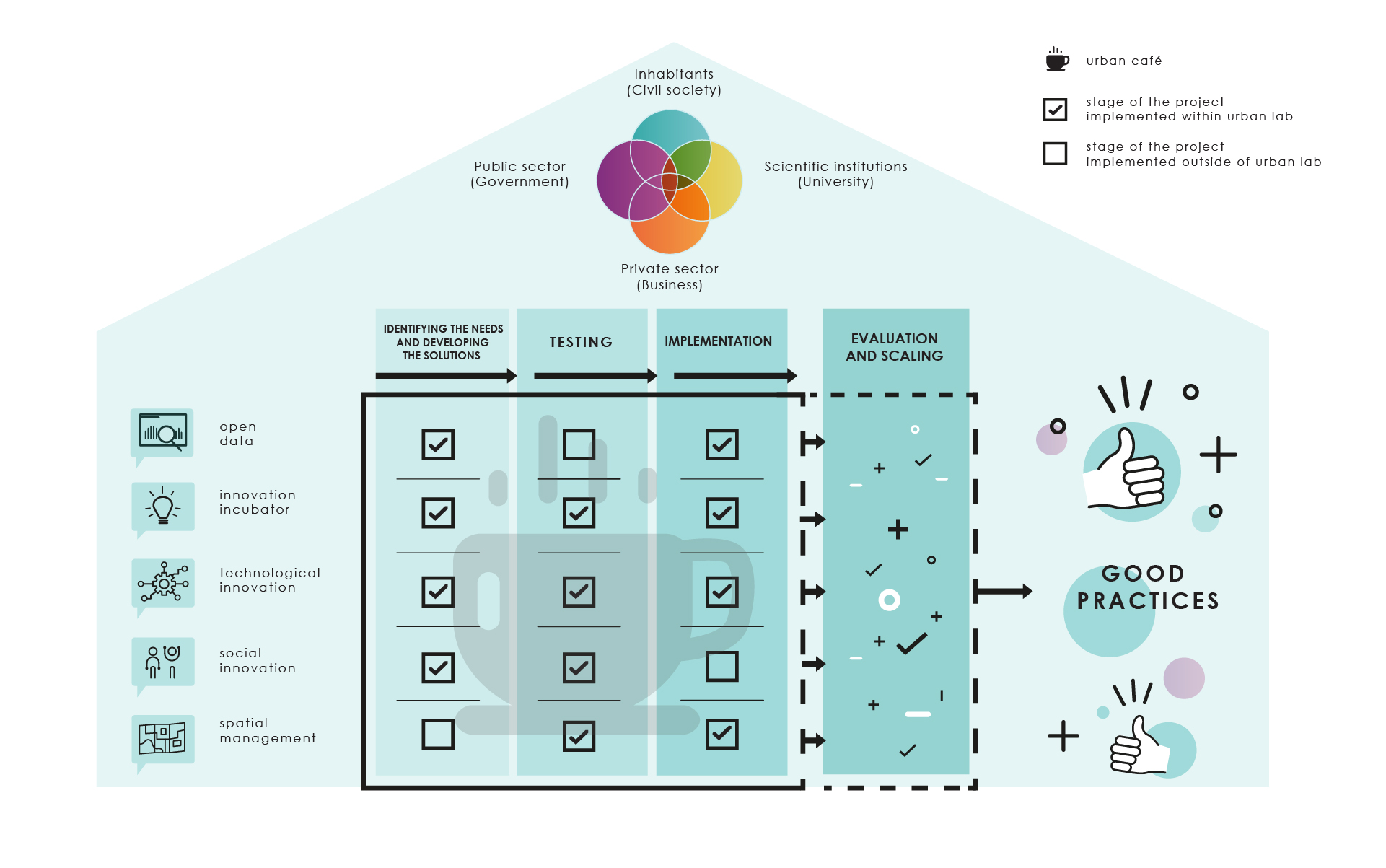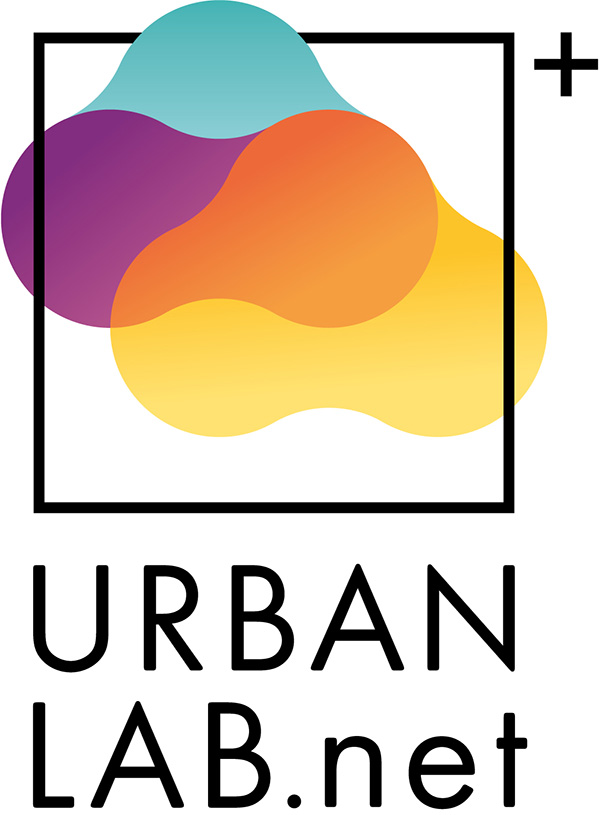The idea of the urban lab was created at the Institute for Urban and Regional Development (IRMiR) as a response to the lack of an instrument supporting cooperation between various groups of urban stakeholders, including primarily the cooperation between the city hall and the residents in Polish cities.
The developed urban lab model was based on the concept of a quadruple helix (QH) which describes an innovative cooperation scheme in which inhabitants (civil society), private sector (business), scientific institutions (university) and public sector (government) cooperate in the purpose of producing innovation in the form of new knowledge, technology, products and services as well as organizational solutions.

Source: own study based on: Etzkowitz, Leydesdorff 2000 and Arnkil et al. 2010
The individual stakeholders of the urban lab in the model approach correspond to the elements of the quadruple helix which are: residents, public sector, private sector and scientific institutions. Their role can be very diverse, as each urban lab is a specific tool balancing the various types of this cooperation.
Local stakeholders create the dynamics and creativity of the city spontaneously, stimulating innovation and entrepreneurship. The challenge here is to transform these activities into a structured process of social and technological innovation that can take place in this type of urban lab. Thanks to this, small and independent initiatives gain an opportunity to increase their scale and test the proposed solutions in real conditions, because they are implemented on the basis of appropriate resources and with the formal leadership of one of the partners.
The relationships between individual stakeholders, as well as the roles they assume in a given lab, determine not only the way of managing it but also shape the subject matter, the type of projects implemented or, finally, the method of financing a given urban lab.

Source: own study
As a result of the developed conceptual assumptions and the refinement of the urban lab model adapted to Polish conditions, the implementation of the project entitled “Urban Lab as a pilot tool to improve the quality of life of city residents in accordance with the idea of smart city”, which is financed by the Ministry of Development Funds and Regional Policy from the funds of the Technical Assistance Operational Program for 2014-2020. In addition to the development of the urban lab concept adapted to Polish conditions, the project includes substantive support for its pilot implementation which started in 2019 in two Polish cities, Gdynia and Rzeszów.
Adapting the assumptions of urban lab functioning to the conditions of Polish cities, a universal, according to the authors, definition of this instrument was also developed:
Urban lab is a tool of cooperation between city authorities and residents, enterprises and scientific entities, aimed at improving the quality of life of residents through innovative solutions to identified problems and generating additional value using urban resources.
In the authors’ opinion, adopting such a definition of urban lab, relating directly to the tool, is the most complete capture of the essence of its functioning. Its definition includes at the same time the main elements of the operation of urban living labs, city labs and living labs, which underlines the fact that urban lab is the most extensive tool in this functional model.


